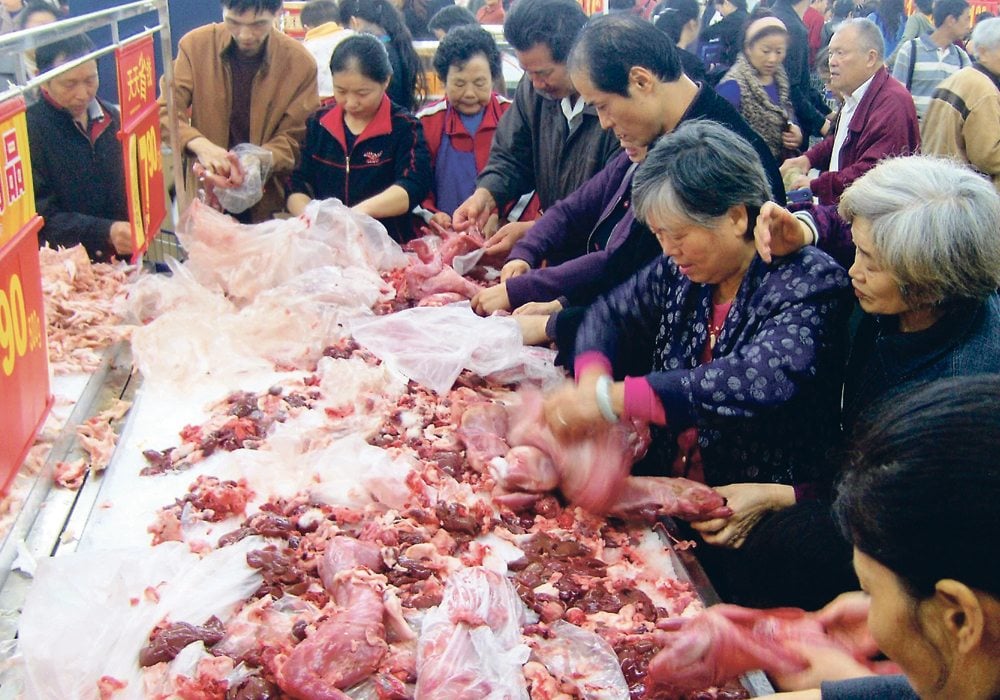Declining demand from China as population falls could have huge implications for the world’s agricultural exporters
With 2.7 billion people, China and India represent about 37 percent of the earth’s population.
In comparison to Canada, those two countries have a population of 1,000 cities the size of Toronto.
It’s been well reported that India will soon exceed China as the most populous country on Earth. What’s less known is that China’s population will likely peak in the next decade and could contract significantly over the next 50 years.
The United Nations, on its population division website, has a graph with potential scenarios for China. A few scenarios look like a mountain with the population peaking at 1.45 billion around 2027 and falling to 1.1 billion by 2070.
Read Also

Farming Smarter receives financial boost from Alberta government for potato research
Farming Smarter near Lethbridge got a boost to its research equipment, thanks to the Alberta government’s increase in funding for research associations.
Other forecasters say China’s population could peak in the early 2020s and might drop below one billion in the next 50 years.
One factor is behind China’s declining population: birth rates.
“If you go to the Chinese, their own census, they have their birth rate at 1.2 (children per woman),” said Darrell Bricker, chief executive officer of Ipsos Public Affairs, a research firm.
Without immigration, countries need women to have about 2.1 babies to keep the population at replacement levels. In certain Chinese cities, the birth rate is much lower than 2.1.
“In Shanghai, a city of 23 million, couples are not taking advantage of new rules that allow them to have two children,” the German news magazine Der Spiegel has reported.
“Chinese women here are having only 0.6 children, which is the lowest rate among all major Asian cities.”
If China’s population does flatten and contract, it could have major implications for food exporting nations. China’s insatiable demand for food has propped up ag commodity markets for the last decade or so. Canadian agri-food and seafood exports to China doubled from 2011-15.
Assuming Chinese demand does soften, India could provide the necessary demand boost for ag commodities.
However, Bricker said India’s birth rate is lower than experts think.
“The UN has India at about 2.4 or 2.5 (children per woman),” said Bricker, who was in India last year for research on a book about global population trends.
“(But) when you talk to demographers in India, their view is that the birth rate … is probably closer to two.”
If that’s correct, India’s population could peak at 1.5 billion around 2035 and then drop.
The low and dropping birth rates in China and India have become normal around the globe.
The UN said in its 2017 population forecast that 83 countries have fertility levels below replacement levels. That list includes some of the world’s largest countries, such as the United States, Brazil, Russia and Japan.
Nonetheless, the UN is predicting the Earth’s population will reach 9.7 billion in 2050 and 11 billion in 2100, largely because of population growth in Africa.
Bricker isn’t buying it.
Birth rates are rapidly dropping in Africa, and he’s convinced that global population will peak mid-century and then decline.
“Nobody in the world is creating more kids,” he said.
“Everybody has told you that the world’s population is going to reach, by 2100, 11 billion people. That is nonsense.”
Other experts agree with Bricker.
Wolfgang Lutz, a German demographer, has said that the world’s population will peak around 2060 and then contract.
Bricker said Canadian farmers and the ag industry should pay attention to global population realities because this “stuff matters.”
Instead of talking about boosting yields and feeding 9.7 billion people by 2050, ag leaders should be focused on how the world’s population is changing.
The world is getting older and many countries will soon have huge numbers of people older than 60. Canada will likely have 12 million people older than 60, up from eight million in 2015.
“We have this idea that the population is going to continue to grow, just like it is today,” Bricker said.
“If you change the nature of people, you change the nature of demand…. What do old people want? Because there are tons and tons of them and they have all the money.”


















